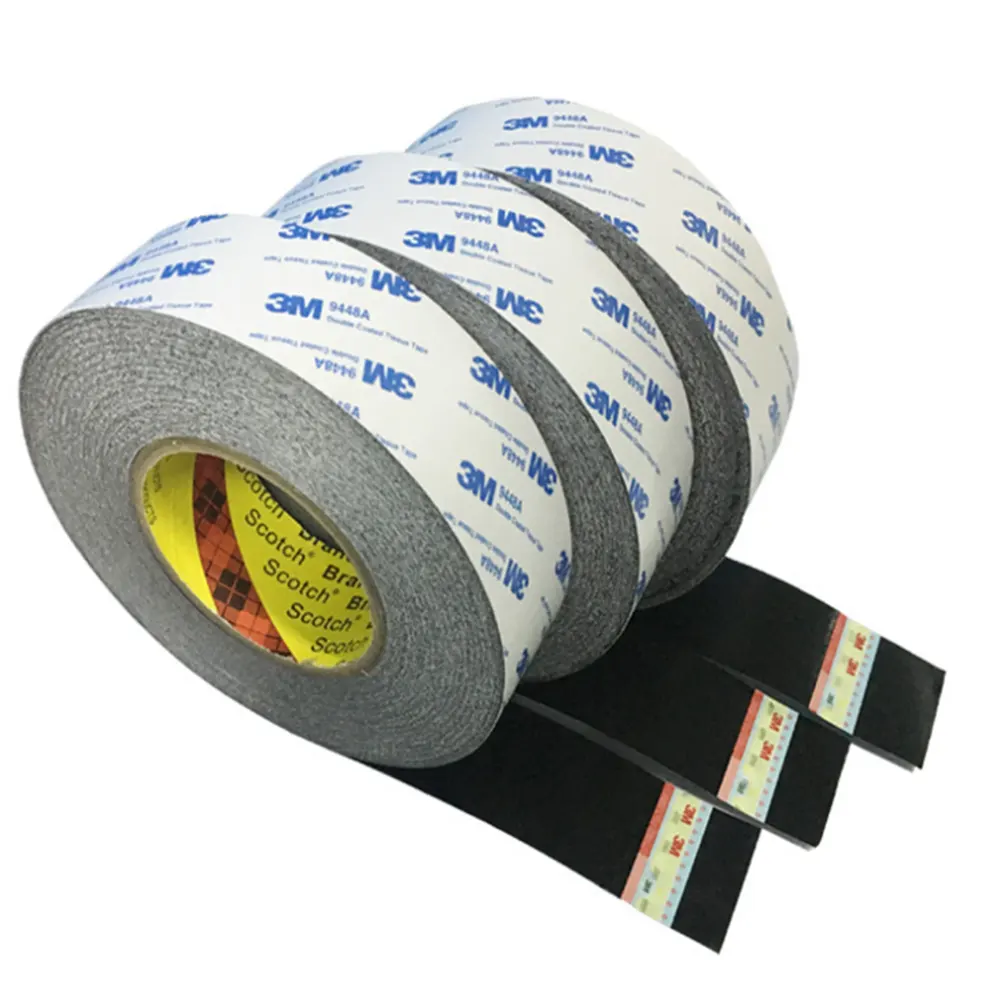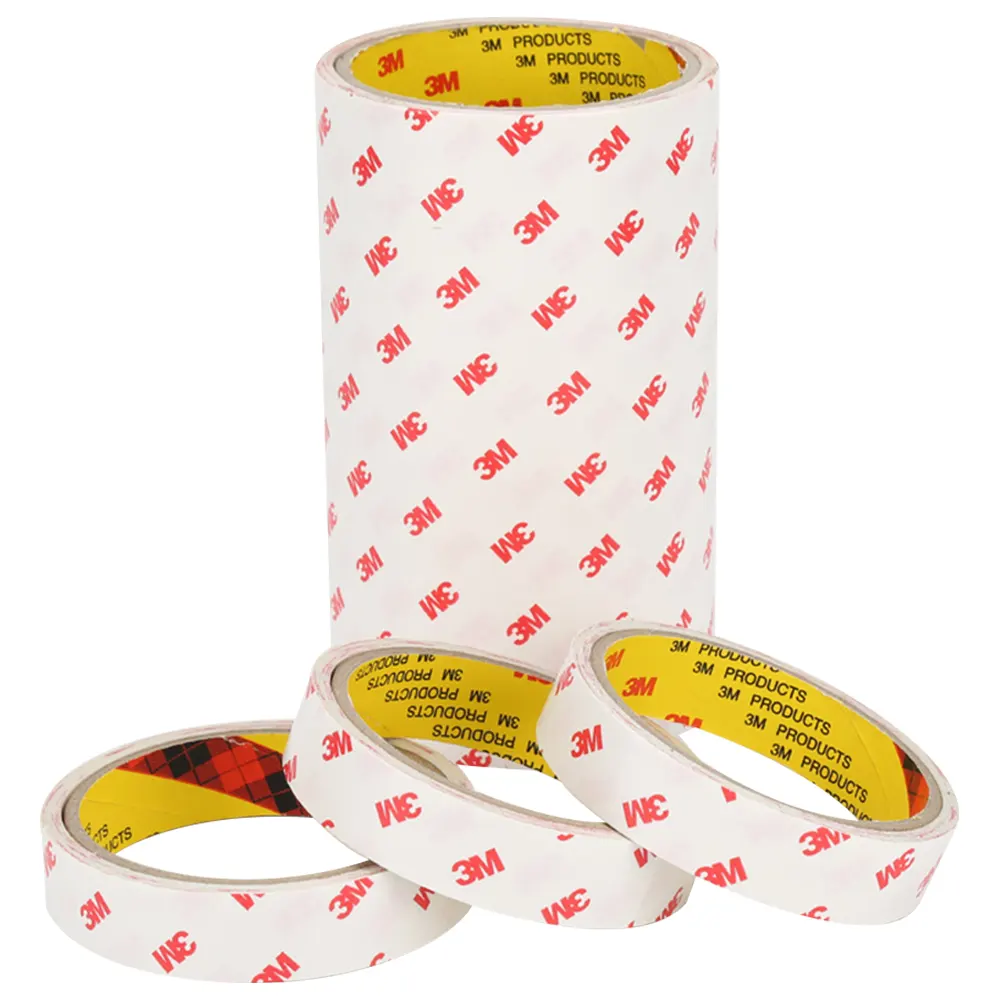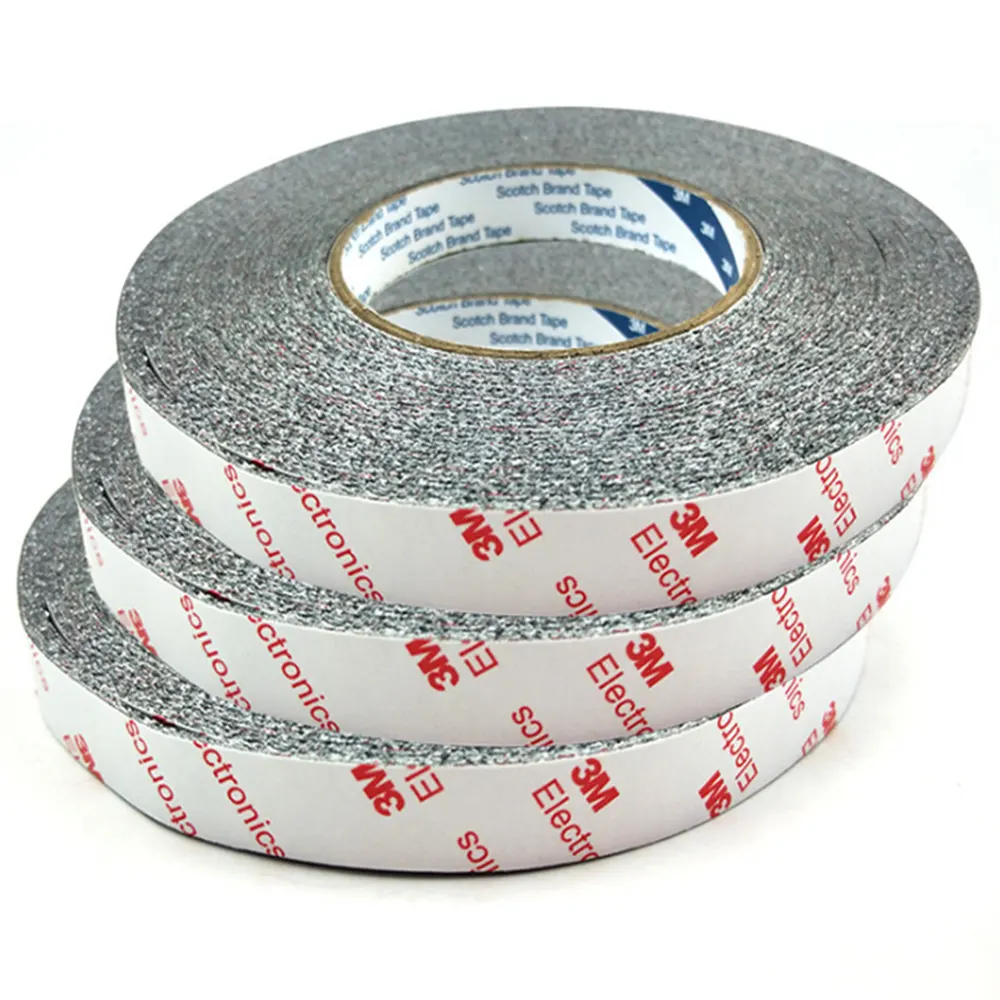Most substrates are best prepared by cleaning with a 50:50 mixture of isopropyl alcohol (IPA) and water* prior to applying 3M Tapes. There are exceptions!
Exceptions to this general procedure that may require additional surface preparation include:
Heavy Oils: A degreaser or solvent-based cleaner may be required to remove heavy oil or grease from a surface and should be followed by cleaning with IPA/water.
Abrasion: Abrading a surface, followed by cleaning with IPA/water, can remove heavy dirt or oxidation and can increase surface area to improve adhesion.
Adhesion Promoters: Priming a surface can significantly improve initial and ultimate adhesion to many materials such as plastics and paints.
Porous Surfaces: Most porous and fibered materials such as wood, particleboard, concrete etc. need to be sealed to provide a unified surface.
Unique Materials: Special surface preparation may be needed for glass and glass-like materials, copper and copper containing metals and plastics or rubber that contain components that migrate (e.g. plasticizers).
Typical bond build over time after appropriate surface preparation.
General Procedure
To obtain optimum adhesion, the bonding surfaces must be well unified, clean and dry. Typical surface cleaning solvents are IPA/ water mixture (rubbing alcohol) or heptane.* (Steps A and B)
Bond strength is dependent upon the amount of adhesive-to- surface contact developed. Firm application pressure develops better adhesive contact and helps improve bond strength. (Steps C and D) Generally, this means that the tape should experience at least 15 psi (100 kPa) in roll down or platen pressure. (Sources- page #4)
After application, the bond strength will increase as the adhesive flows onto the surface. At room temperature, approximately 50% of the ultimate strength will be achieved after 20 minutes, 90% after 24 hours and 100% after 72 hours. In some cases, bond strength can be increased and ultimate bond strength can be achieved more quickly by exposure of the bond to elevated temperatures (e.g. 150°F [66°C] for 1 hour).
*Note: These cleaner solutions contain greater than 250 g/l of volatile organic compounds (VOC). Please consult your local Air Quality Regulations to be sure the cleaner is compliant. When using solvents, be sure to follow the manufacturer’s precautions and directions for use when handling such materials.
Step One:
Solvent Wipe:
Step two:
Wipe Dry
Step three:
Apply tape to surface.
Step four:
Roll finished Joint;




General procedure surface preparation prior to applying 3M tape.
Images showing abrading and cleaning the surface and J-rolling the taped joint to improve bond performance of 3M tape.
Heavy Oils
On surfaces with a light oily film, or other light contamination, the 50:50 IPA/water solution is usually adequate. Where heavy oils or grease are present, a “degreasing” solvent such as 3M™ Prep Solvent 70, 3M™ Citrus Base Cleaner, mineral spirits, naphtha or similar solvents are suggested to cut the oil. This should always be followed with an IPA/water cleaning to help ensure that any residue or film is completely removed.
Abrasion
Abrading a surface can serve several functions:
Remove heavy levels of dirt or oxide from metals or paints (e.g. galvanized steel).
Create additional surface area that can increase adhesion.
Smooth a surface to obtain more flatness, allowing improved contact area.
Abrasion often helps adhesion to paints and plastics. When abrading, it is important for tapes to have a finely abraded surface. Very small scratches in the surface, generated with circular motion rather than straight-line motion, are most desirable. A surface with many micro-scratches in it can have up to 40% additional available surface area, translating to higher ultimate strength and greater initial adhesion. Scotch-Brite® Hand Pads (such as 7447 Maroon or Heavy Duty Green) are good for achieving the right level of abrasion. Tools such as a power palm sander will assist on large jobs. Avoid grinding a surface with coarse abrasive materials, since they may create too rough of a texture for the adhesive to adequately flow into the surface. Always clean the surface with the IPA/water solution or additional methods previously described, and be certain that all loose particles are removed prior to bonding. Exceptions to these abrading guidelines are 3M Tapes 4932 and 4952, as they typically perform best on smooth glossy surfaces and abrasion may reduce the bond strength.
Adhesion Promoters
Priming a surface can significantly improve initial and ultimate adhesion to many materials such as plastics and paints because of their low surface energy or the additives they may contain. A primer creates a new surface for 3M Tape to adhere to and can also create a layer that may impede the migration of additives that may be present in a material. It is important for the user to determine the suitability of the 3M Tape, the adhesion promoter and the application process.
Porous Surfaces
Rough, porous or fibered materials such as wood, particleboard, cement, etc., have an open surface and require sealing to provide a unified surface for tape bonding. Common sealing materials would include paint, varnish or other hard surface coatings. Fast drying 3M™ Rubber and Vinyl Spray 80 can also be used to unify the surface and improve the tape bond.
Unique Surfaces
Glass, stone, ceramic or other siliceous materials are hydrophilic (water-loving) by nature. Normally, the hydrophilic nature makes pressure sensitive adhesive bond durability susceptible to change under high humidity or exposure to moisture. In basic terms, water vapor can undercut the tape bond and interfere with the normal adhesion forces. Silane coupling agents, added to the IPA/water cleaning solution, can help reduce the “water-loving” tendency of these surfaces and enhance the tape bond in high moisture environments.
Copper, brass, and bronze are prone to oxidation even after the 3M Tape is applied. To prevent a weakening of the bond, a lacquer or varnish should be applied to these surfaces. Be sure to test the tape bond to the sealer on a metal surface to verify good adhesion.
Flexible PVC (vinyl) contains plasticizers that can migrate into the tape and affect adhesion. There are several 3M Tapes that are formulated to be resistant to plasticizer migration, or 3M™ Scotch-Weld™ Plastic Adhesive 2262, thinned, can serve as a barrier to migration. Rubber materials (e.g. EPDM, neoprene) can have low surface energy and may also contain plasticizers and oils. These require the use of an adhesion promoter for stable bond strength. Test for compatibility with flexible PVC and rubber materials by aging bonded samples for a week at 150°F (66°C) and check for softening of the adhesive, discoloration or reduction in bond strength.
*Note: These cleaner solutions contain greater than 250 g/l of volatile organic compounds (VOC). Please consult your local Air Quality Regulations to be sure the cleaner is compliant. When using solvents, be sure to follow the manufacturer’s precautions and directions for use when handling such materials.






